Why you can trust Tom's Hardware
Our HDR benchmarking uses Portrait Displays’ Calman software. To learn about our HDR testing, see our breakdown of how we test PC monitors.
The ES07D03 supports HDR10 signals with a DisplayHDR 600 certification. When the appropriate content is detected, it switches modes automatically.
HDR Brightness and Contrast
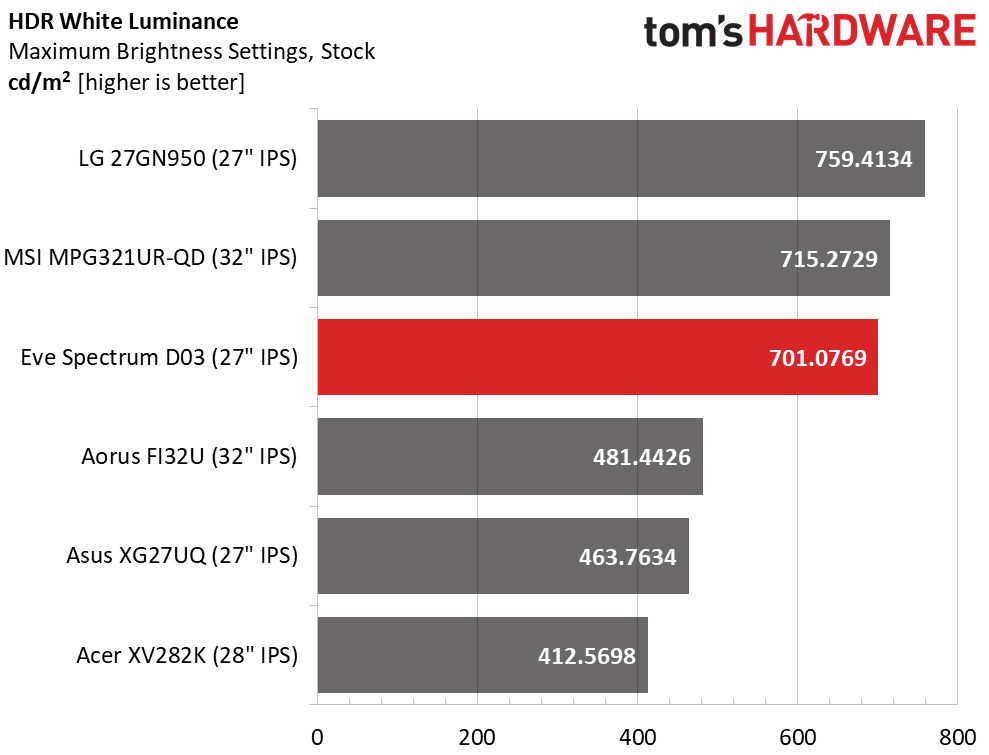
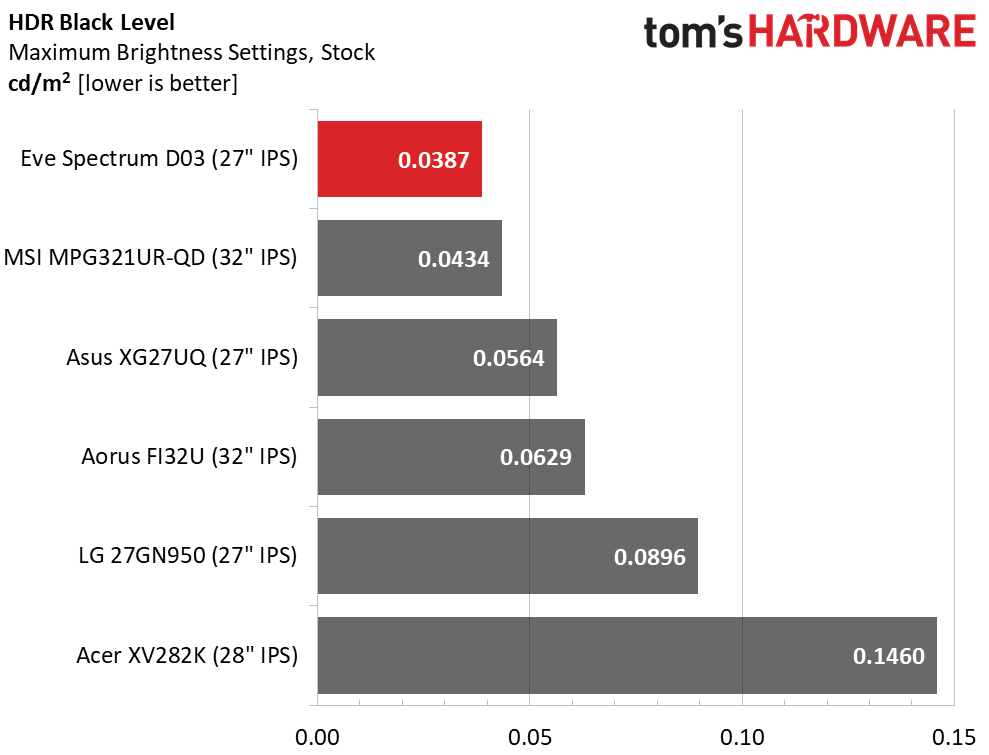
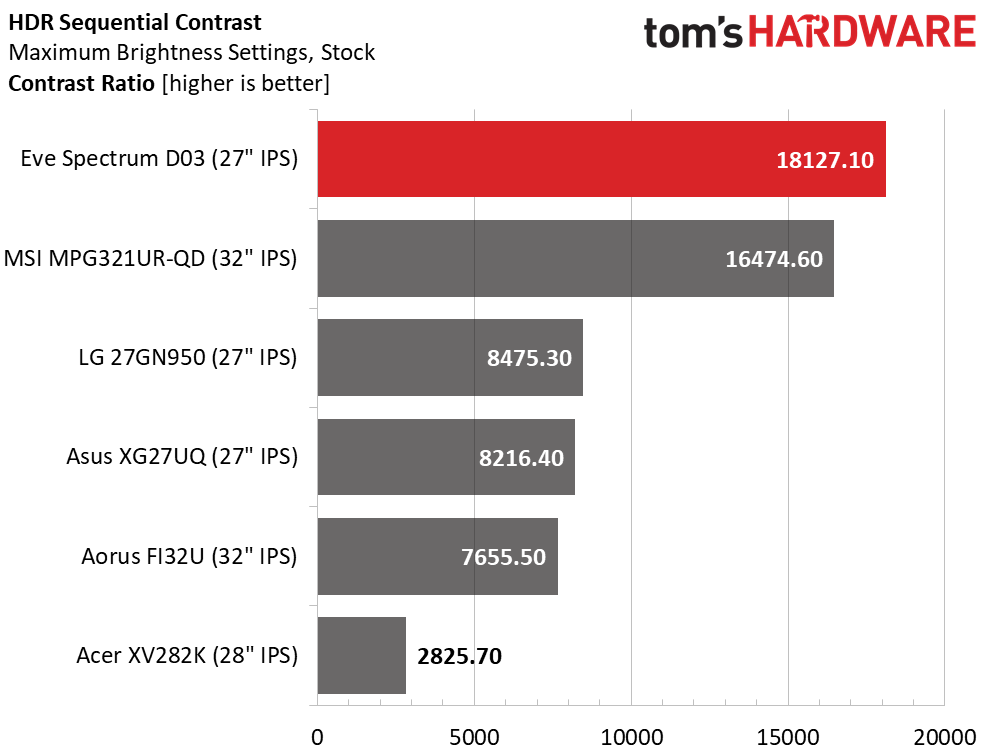
In HDR mode, the ES07D03 employs a 16-zone dimming feature with its edge LED backlight. This isn’t as effective as a full-array configuration, but it delivers far better HDR than a monitor that does nothing to enhance HDR contrast. It is also better than modulating the entire backlight as some screens do. My sample peaked at just over 701 nits when measuring both window and full-field patterns. This provides a lot of pop and dimension to the image, especially when coupled with the very low 0.0387-nit black level. The resulting contrast is 18,127.1:1, one of the better HDR contrast scores I’ve recorded. In practice, the HDR image is excellent with lots of depth and highly saturated color.
Grayscale, EOTF and Color
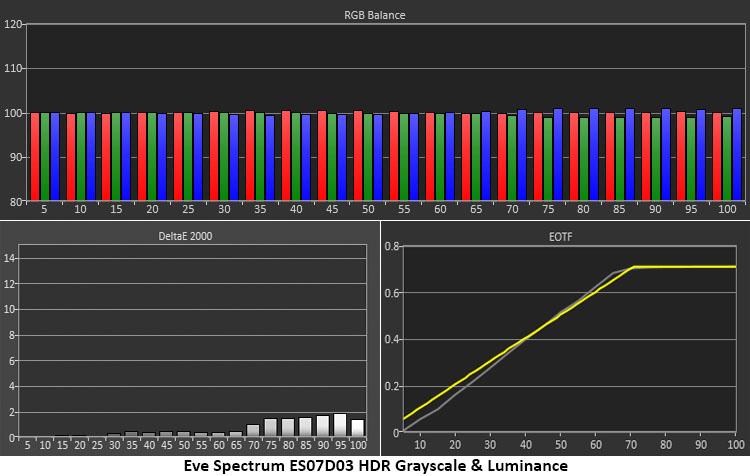
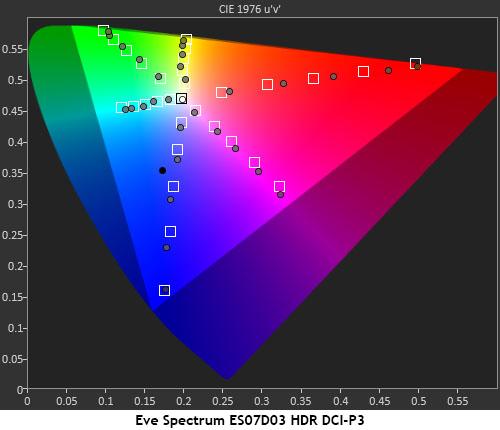
The ES07D03’s factory calibration obviously extends to HDR even though it’s not documented on the included data sheet. Grayscale tracking is visually perfect. The luminance curve runs a little dark in shadow areas and transitions to tone-mapping about 4% too early. These are minor issues that will be hard to spot in content. I certainly had no complaints when playing Doom Eternal or watching streamed HDR10 video content.
HDR color tracking shows a bit of over-saturation in red, magenta and blue. Green is also slightly over in the inner targets. Gamut coverage is thorough, which means you’ll see every intended color and detail in HDR games and video.
Get Tom's Hardware's best news and in-depth reviews, straight to your inbox.

Christian Eberle is a Contributing Editor for Tom's Hardware US. He's a veteran reviewer of A/V equipment, specializing in monitors. Christian began his obsession with tech when he built his first PC in 1991, a 286 running DOS 3.0 at a blazing 12MHz. In 2006, he undertook training from the Imaging Science Foundation in video calibration and testing and thus started a passion for precise imaging that persists to this day. He is also a professional musician with a degree from the New England Conservatory as a classical bassoonist which he used to good effect as a performer with the West Point Army Band from 1987 to 2013. He enjoys watching movies and listening to high-end audio in his custom-built home theater and can be seen riding trails near his home on a race-ready ICE VTX recumbent trike. Christian enjoys the endless summer in Florida where he lives with his wife and Chihuahua and plays with orchestras around the state.
-
Gillerer The review has no mention - never mind cautioning potential buyers - of the less-than-stellar reputation Eve has when it comes to delivering products....Reply
Taking preorders for the "first high-end high resolution monitor with high refresh rate", then taking months to fulfil the orders, by which time other manufacturers have released and actually started selling similar models; Buyers would have been better off waiting and getting the name brand option.
EDIT: And no, I'm not talking about kickstarter backers, but actual retail orders after the product was supposedly released. -
10tacle I am so tired of 27" 4K monitors. Can we PLEASE get 32" 4K straight up 16:9 for those of us with older eyes who like gaming but think that 1440p at that size is just not enough pixel density for the size? The large older flight simulator community will thank whoever creates one with business.Reply -
Trevor_lb You should be ashamed. How can encourage your readers to throw away $1000 on a product you know perfectly well they will never receive. I hope you were paid a lot.Reply
If you're considering patronizing this fraudulent company, PLEASE read google reviews, TrustPilot, and the subreddit first. -
IAmMrBongo Only 2 cons?Reply
The biggest con isn't mentioned, it being that the monitor is a con and will never arrive.
Been waiting since May. The monitor isn't real. There is no monitor. Buy an existent one instead.